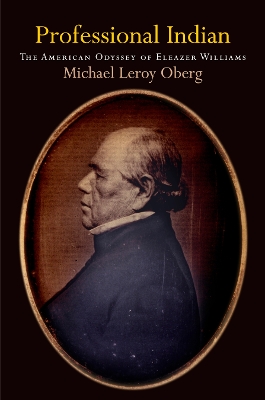Early American Studies
2 total works
Roanoke is part of the lore of early America, the colony that disappeared. Many Americans know of Sir Walter Ralegh's ill-fated expedition, but few know about the Algonquian peoples who were the island's inhabitants. The Head in Edward Nugent's Hand examines Ralegh's plan to create an English empire in the New World but also the attempts of native peoples to make sense of the newcomers who threatened to transform their world in frightening ways.
Beginning his narrative well before Ralegh's arrival, Michael Leroy Oberg looks closely at the Indians who first encountered the colonists. The English intruded into a well-established Native American world at Roanoke, led by Wingina, the weroance, or leader, of the Algonquian peoples on the island. Oberg also pays close attention to how the weroance and his people understood the arrival of the English: we watch as Wingina's brother first boards Ralegh's ship, and we listen in as Wingina receives the report of its arrival. Driving the narrative is the leader's ultimate fate: Wingina is decapitated by one of Ralegh's men in the summer of 1586.
When the story of Roanoke is recast in an effort to understand how and why an Algonquian weroance was murdered, and with what consequences, we arrive at a more nuanced and sophisticated understanding of what happened during this, the dawn of English settlement in America.
Born in 1788, Eleazer Williams was raised in the Catholic Iroquois settlement of Kahnawake along the St. Lawrence River. According to some sources, he was the descendant of a Puritan minister whose daughter was taken by French and Mohawk raiders; in other tales he was the Lost Dauphin, second son to Louis XVI of France. Williams achieved regional renown as a missionary to the Oneida Indians in central New York; he was also instrumental in their removal, allying with white federal officials and the Ogden Land Company to persuade Oneidas to relocate to Wisconsin. Williams accompanied them himself, making plans to minister to the transplanted Oneidas, but he left the community and his young family for long stretches of time. A fabulist and sometime confidence man, Eleazer Williams is notoriously difficult to comprehend: his own record is complicated with stories he created for different audiences. But for author Michael Leroy Oberg, he is an icon of the self-fashioning and protean identity practiced by native peoples who lived or worked close to the centers of Anglo-American power.
Professional Indian follows Eleazer Williams on this odyssey across the early American republic and through the shifting spheres of the Iroquois in an era of dispossession. Oberg describes Williams as a "professional Indian," who cultivated many political interests and personas in order to survive during a time of shrinking options for native peoples. He was not alone: as Oberg shows, many Indians became missionaries and settlers and played a vital role in westward expansion. Through the larger-than-life biography of Eleazer Williams, Professional Indian uncovers how Indians fought for place and agency in a world that was rapidly trying to erase them.

